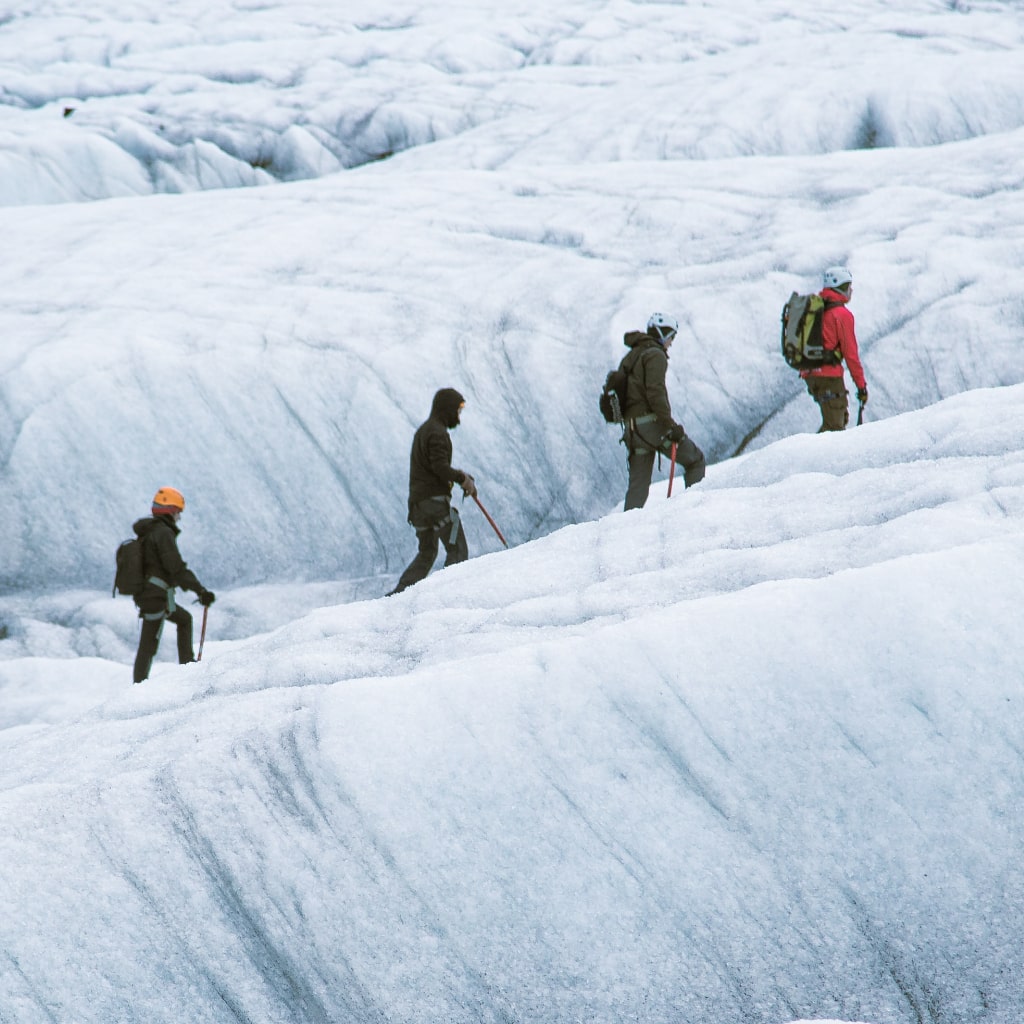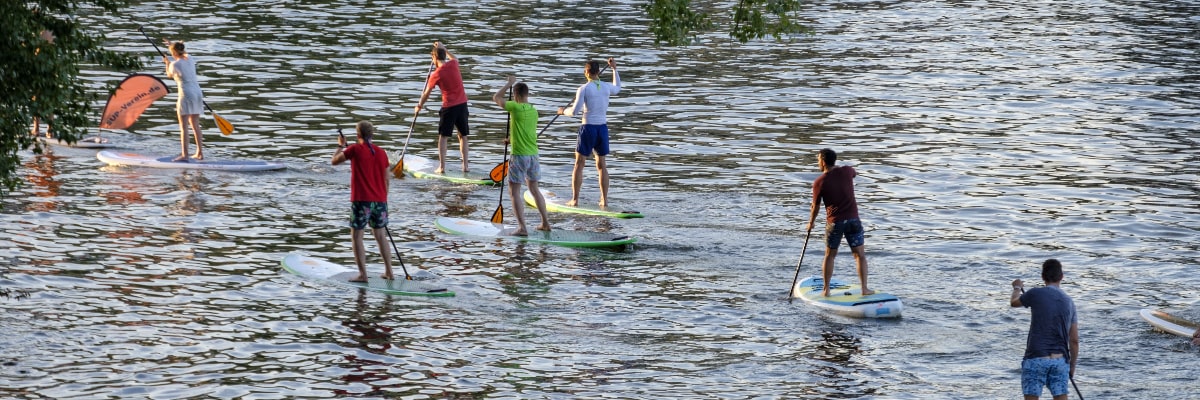Inspired for an Adventure? Check out Beef Stroganoff - Pouch and Beef Stew - Pouch
Free Ground Shipping On All Orders
Over 2,100 Reviews
Add description, images, menus and links to your mega menu
A column with no settings can be used as a spacer
Link to your collections, sales and even external links
Add up to five columns
Add description, images, menus and links to your mega menu
A column with no settings can be used as a spacer
Link to your collections, sales and even external links
Add up to five columns


Crampons provide essential traction for a wide variety of pursuits in the hills and mountains, from general snow-walking to advanced, glazed-over vertical or overhanging technical routes. Ice climbing—both of the alpine-mountaineering and specialized waterfall-climbing varieties—very much relies on the right kind of crampon for critical purchase and stability.
In the following guide, we’ll talk a little about crampons in general, then focus on types best suited to ice climbing and a little on how to use crampons in this kind of pursuit.
What Are Crampons?
Crampons refer to footwear accessories armed with metal spikes to boost traction, primarily on ice and hard snow. The basic idea of foot spikes has a deep lineage stretching back more than two millennia, but the model for the modern mountaineering crampon was established in the early 20th century. In 1908, Oscar Eckenstein invented the 10-point crampon (“points” being the crampon spikes), which revolutionized alpine climbing. A couple of decades later, Laurent Grivel’s addition of two front points to the 10-point design made the 12-point crampon the benchmark for elite alpinists.
Both 10- and 12-point crampons remain in popular use among climbers, though today’s 10-point models also include the two jutting-out front points. If you intend to ascend snowy or icy slopes, traverse glaciers, or climb iced-over rock faces, crampons are absolutely vital alongside your ice axe/ice tools.
Crampon Frame Construction
There are three main types of crampon construction: hinged/flexible, semi-rigid, and rigid.
Hinged
These lightweight frames offer flexibility, making them easy to walk on across more level surfaces. Best for general alpinism, they can work for some kinds of alpine ice climbing when paired with a stiffer boot. They’re not the crampon construction to go with for waterfall or other vertical/overhanging ice exploits, however, as they vibrate too much for extensive front-pointing work.
Rigid
Suitable only for stiff boots and too clunky for general mountaineering, rigid crampon frames provide excellent stability for ice climbing, with very little vibration when kicked into hard alpine or water ice.
Semi-Rigid
These days, the most popular crampon frame (including for ice climbing) is the semi-rigid model, which—as the name suggests—falls between rigid and hinged crampons in terms of flex. Many semi-rigid crampons have an adjustable linking bar so that they can be easily turned into a flexible frame for approaches, then firmed up for more technical climbing.
Crampon Binding Styles
The attachment system you choose for your crampon mainly depends on the kind of boot you’re wearing. There are three main systems: strap-on, step-in (or automatic), and hybrid (also called mixed or semi-automatic) bindings. Of these, step-in and hybrid bindings are generally best for serious ice climbing.
Strap-On
Strap-on crampons are attractive on account they can be integrated with just about any boot style. These include “Scottish” strap styles with a fixed, ring-secured front strap and several other straps attaching to side and rear posts as well as two-strap and four-strap models. Nowadays, most straps in these systems are constructed from nylon. While they don’t fit quite so snugly as step-in crampons, strap-on systems provide suitable snugness for ice climbing of low- to medium-grade intensity.
Step-In
Step-in or automatic crampons feature a front wire bail for the boot toe and a heel lever in the back. Boots with pronounced toe and heel welts/grooves are generally needed for an adequately tight connection with step-in crampons, but, when properly fitted, these provide exceptional snugness and stability. Step-in crampons are also appealing given how easy they are to secure when wearing gloves.
Hybrid
Hybrid crampons have a heel lever or clip like a step-in model, but a toe strap up front. Therefore, they require a boot with a notable heel welt, but an analogous groove at the toe isn’t necessary.
Crampon Materials
Crampons generally come in two kinds of metal: aluminum or steel.
Steel
Steel is the optimum choice for ice-climbing crampons, as it’s very durable and strong. Steel crampons can last many years, and their points—which hold up well against the rock surfaces that alpine and mixed climbers often find themselves dealing with alongside snow and ice—can be effectively sharpened multiple times.
Aluminum
Aluminum crampons are nice on account of how light they are, but they aren’t nearly so durable as their steel counterparts. Their softer points don’t handle rock very well, and can only be sharpened a few times before becoming useless.
Crampon Front-point Configurations
Another key feature of crampons are the frontmost, forward-facing points (or point), the style, shape, and number of which help determine what kind of climbing and surfaces a given crampon model is best suited for. Here are some of the variations you’ll be weighing when choosing the ideal crampons for your ice-climbing purposes.
Horizontally vs. Vertically Oriented Points
Horizontal front points are versatile, providing good grip in many general-mountaineering settings. Vertical front points, which are often serrated and much resemble the point of an ice ax, are more specialized, ideal for technical vertical waterfall/mixed climbs.
Dual vs. Mono Points
Most crampons have two front points: the standard dual design best for most kinds of climbing. Single front points—aka monopoints—are sometimes chosen over dual points for vertical ice climbing, and are also favored for dry-tooling on bare rock.
Modular vs. Fixed Points
Climbers doing a lot of hard-ice or mixed climbing often opt for modular points, which can be adjusted in configuration for different surfaces and replaced when they become dull. Worn fixed points can be sharpened, though only up to a certain point—but fixed-point crampons tend to weigh less and are somewhat more stable than modular setups.
How to Use Crampons in Ice Climbing
We don’t have the space to go into the full ins-and-outs of crampon use in ice climbing, but we’ll sketch out some of the beginner fundamentals here.
Crampons must be exactly fitted to your foot and your boot to be effective. When selecting crampons at the store, wear your preferred ice-climbing boot, and bring along any others if you use multiple pairs on a typical climb so you can be sure your crampons will be compatible with all your footwear. If you’ll be wearing gaiters or overboots, you want to make sure a pair of crampons fits with those accessories as well.
Ice climbers typically ascend gentle to moderately steep snow- or ice-covered slopes by flat-footing, biting into the substrate with all of the crampon points. Flat-footing has many variations, including forward-facing and sideways arrangements supported by an ice ax in cane, cross-body, or anchor positions.
Steep to downright vertical or overhanging ice climbs as well as mountainsides armored in very hard ice or snow require front-pointing, wherein the crampon’s front points are kicked directly forward into the substrate. The climber’s body weight is supported on those front points, with the ice ax employed in dagger, anchor, or traction positions.
It’s important to know when to use crampons. Obviously, they’re essential for steep, frozen slopes and walls, but they may hamper you on approaches of slushy snow or soft ice better handled on skis or snowshoes. High-quality crampons of the right design can handle stretches of bare rock for mixed climbs or dry-tooling, but excessive climbing on rock will wreak havoc on crampons.
Make sure to carefully clean and inspect crampons after climbs. You don’t want to be surprised by dulled points or fraying straps in the middle of a tricky route, so sharpen, repair, or replace diligently. How to sharpen crampons, you might ask? A hand file works just fine. Remember that steel points stand up to repeated sharpening much better than softer aluminum ones.
Satisfy Your Ice-Climbing Hunger With Mountain House
Whether you’re summiting a glaciated massif, wending your way up a frosty wintertime gully, or tackling a gnarly frozen waterfall, well-chosen crampons are your best friends on an adventurous ice climb. So are just-add-hot-water Mountain House meals, which have been fueling alpinists of every description for more than a half-century!

Top 11 Hardest Mountain Climbs in the World

Beginner’s Guide to Stand Up Paddle Boarding (SUP)


Stay Hungry for Adventure
Sign Up for Delicious Outdoor Meals & Exclusive Offers!
By clicking ‘Join Now’, I agree to the Terms of Service and Privacy Policy.


Join the adventure
©2025 Mountain House — All Rights Reserved.
Your Cart is Empty
Continue ShoppingYour Cart
Subtotal
$0.00
EXPRESS PAYMENT METHODS AVAILABLE IN CHECKOUT
Taxes and Shipping Calculated at Checkout
Your ExpertVoice deal.
$[Deal Price]
$[Original Price]
Discount applied at checkout.
On sale now — lower than your ExpertVoice discount.
Not eligible for ExpertVoice discount.














